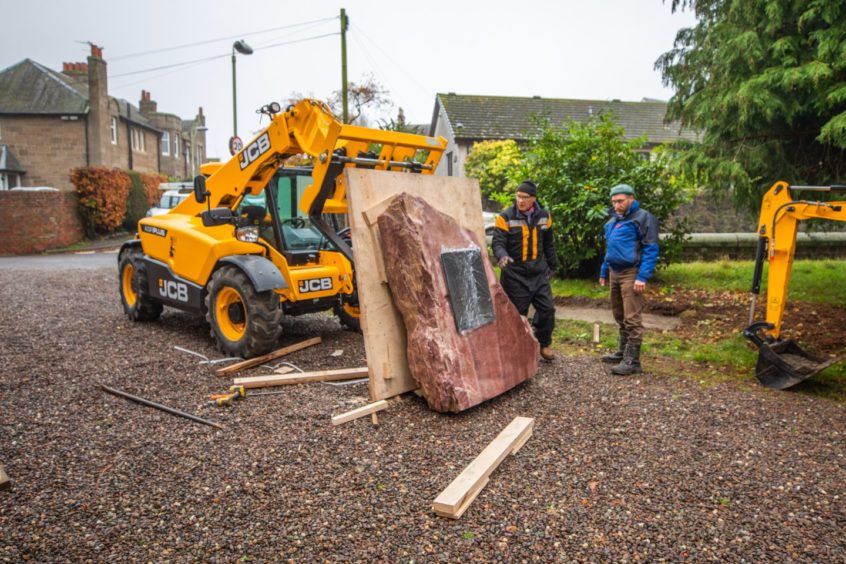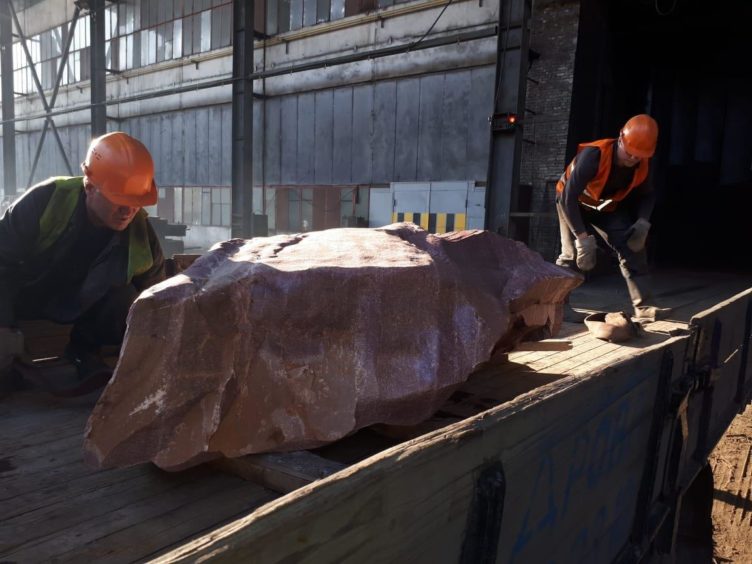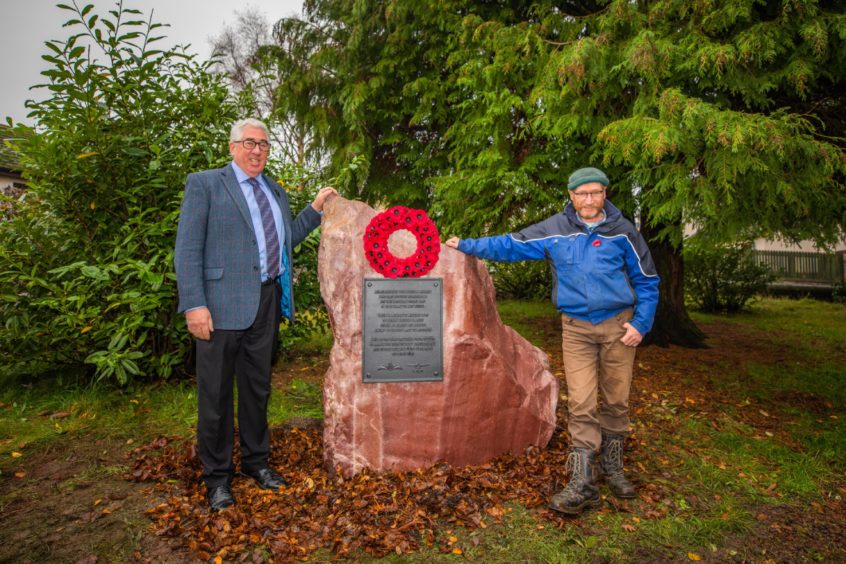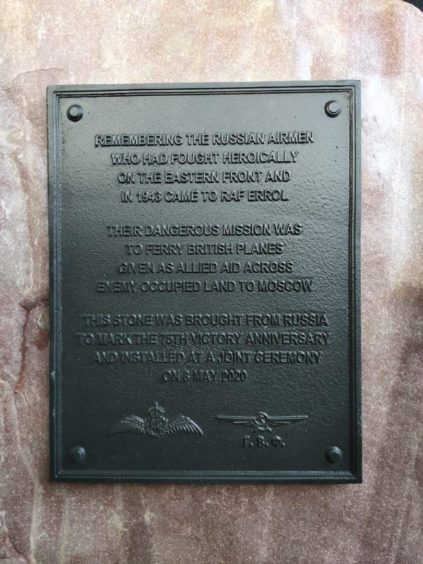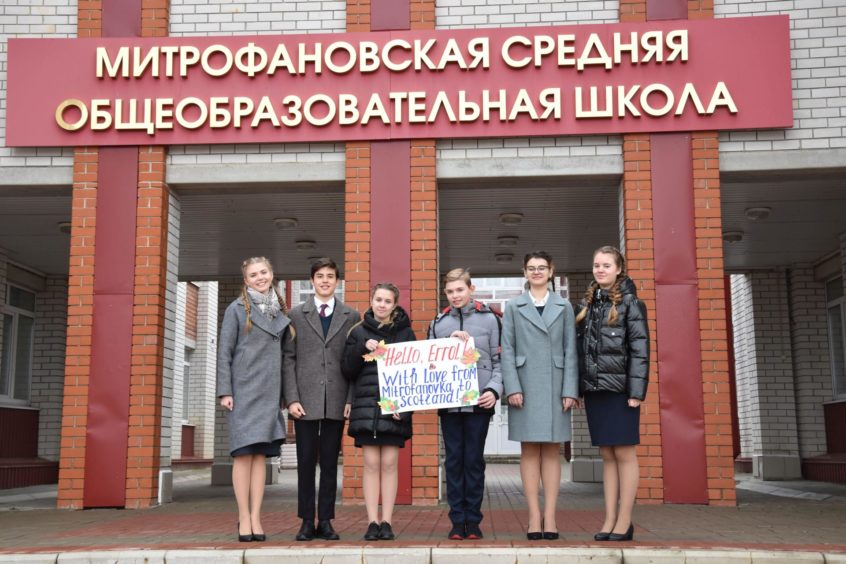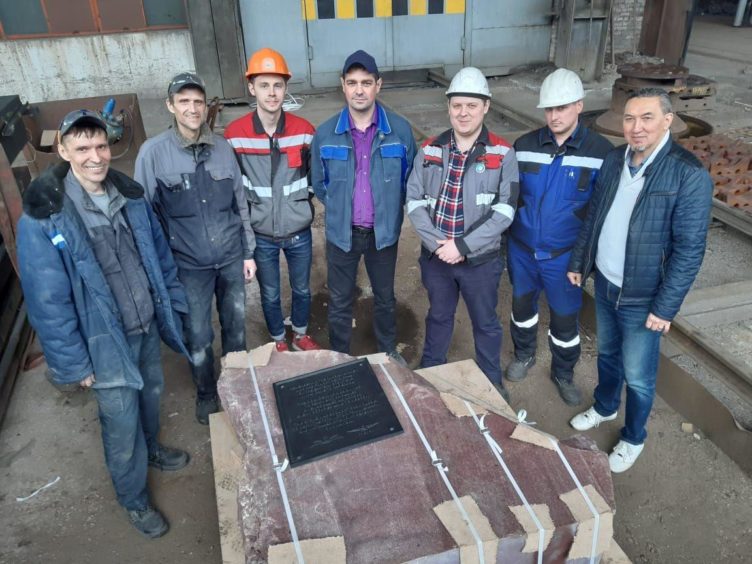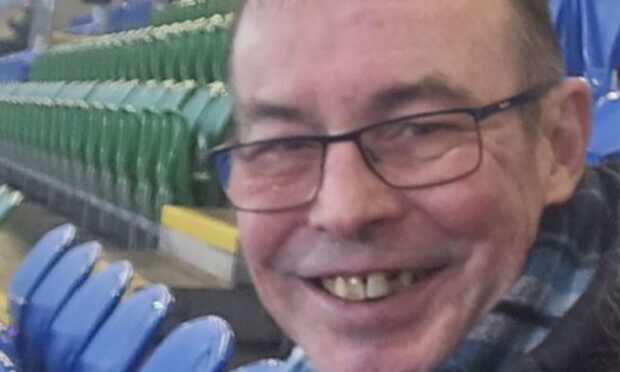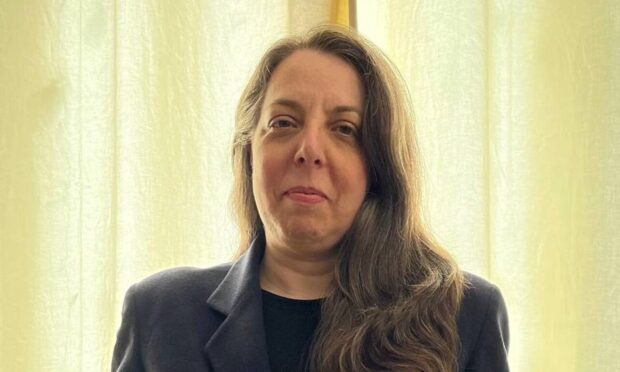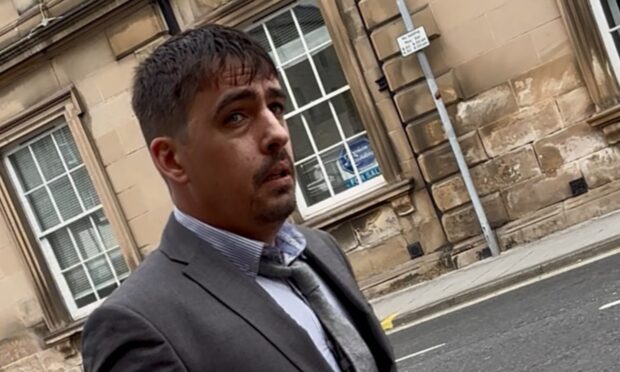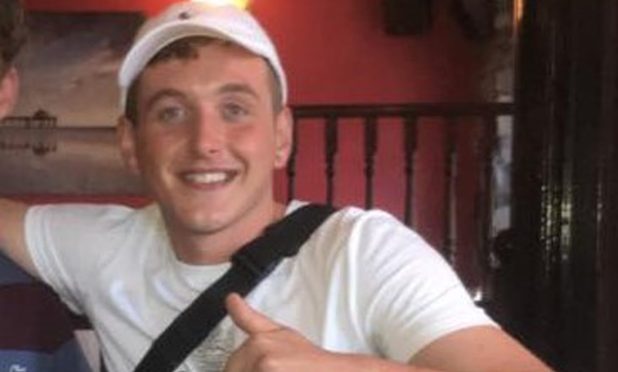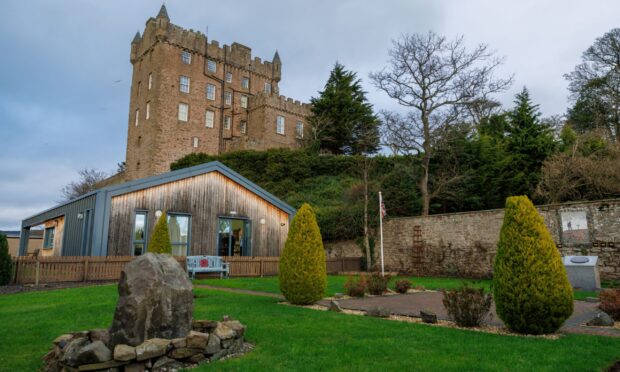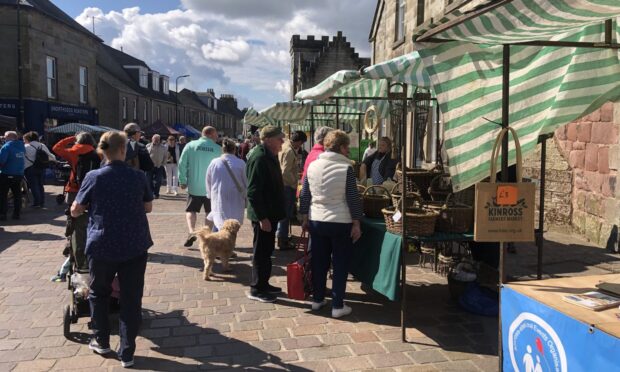A hefty rock monument honouring Russian airmen who came to Scotland as part of a top secret mission has been installed in the grounds of a Perthshire church.
The huge obelisk arrived at Errol on Tuesday morning after a 2,500 mile cargo ship crossing from St Petersburg.
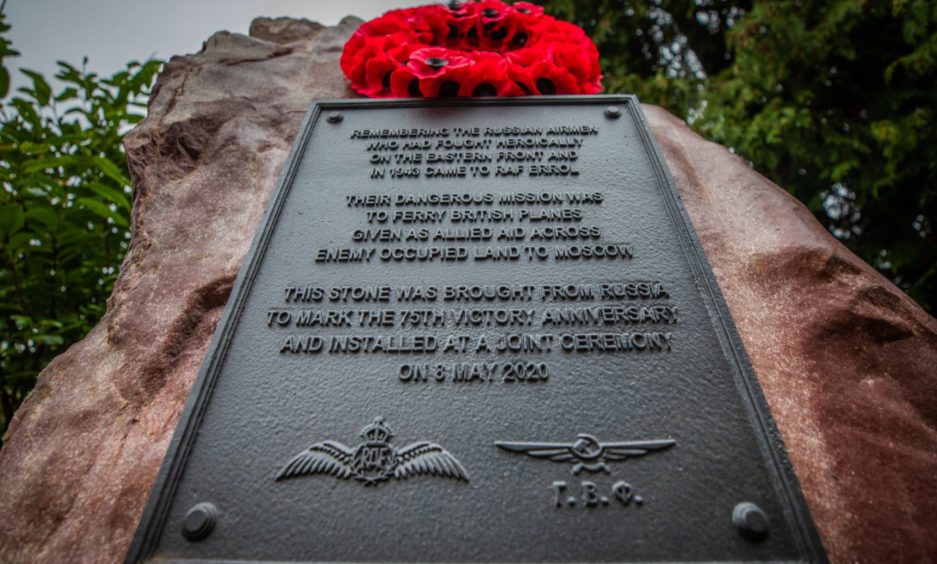
It is made from rare crimson Shoksha quartzite, mined in Karelia in the north-west of Russia. The same stone is used at the Tomb of the Unknown Soldier in the wall of the Kremlin.
Likened to a Soviet meteorite crash-landed at Errol Parish Church, the largely unsculptured stone will act as a permanent tribute to Russian airmen who were part of the elite Moscow Special Assignment Airgroup, formed in the first day’s of Hitler’s invasion, from the country’s best civil aviators.
They undertook crucial tasks for the High Command. Flying passenger DC-3s equipped with gun turrets, they delivered food to besieged Leningrad and dropped thousands of parachute troops behind enemy lines to defend Moscow.
They also flew in supplies to armies trapped inside enemy circles and evacuated the wounded under direct artillery fire in the last days of the Defence of Sevastopol.
Among their numbers were Russian airmen Aleksandr Gruzdin, Aleksandr Alexeev, Vasilly Dryamin, and Czech colleague Frantisek Drahovzal who died when their plane crashed during a training flight at Fearnan in May 1943.
One of the most notable pilots was Peter Kolesnikov, whose granddaughter Anna Belorusova uncovered the airmen’s story while researching a book.
She suggested the site for the rock, based on an old postcard brought home by her grandfather.
A museum in Mr Kolesnikov’s honour, in his home village of Mitrofanovka, has opened to showcase the important connection with the Errol unit.
The Special Representative of the President of the Russian Federation for International Cultural Cooperation Mikhail Shvidkoi said: “Today these brave men, who had fought in the hardest battles of the Eastern Front and then arrived in Britain on an allied mission, represent the historic bond forged during World War Two by our two countries, standing shoulder to shoulder against Nazism.
“The Errol Memorial has come about as a result of the combined goodwill and personal efforts of the ordinary people of Russia and Britain, in their common aspiration to preserve the cherished memory of our shared past and pass it on to future generations.”
After a secret deal between Britain and Russia in 1942, the cream of the Moscow Special Air Transport Group were sent to Errol, where an aerodrome had been opened in 1940.
The British government acquired the land from farmers in 1938 fearing Sweden might take Germany’s side.
Errol’s position was important as it was the shortest route to Sweden.
After Sweden became neutral, Errol was turned into a training base with more than 2,000 people from allied countries.
In early 1943, when the shortage of transport aircrafts became acute, the British Government gave the Russian allies 100 modified Albemarle bombers.
These twin-engine aircraft were too big to be carried on the Arctic Convoy ships which were delivering fighter planes to the Red Army Air Force. Instead, they had to be flown at night across the North Sea and enemy-occupied territories.
Twenty crews were flown in groups to Errol, where they joined the specially formed top secret 305 Ferry Training Unit, Royal Air Force, to learn how to operate and fly the bombers to Russia.
Eleven Russian airmen died in the operation.
The Errol Stone, which will be used for future commemorations, was sculpted by Aleksandr Kim, a renowned sculptor based in Petrozavodsk.
A plaque was cast based on a design by Ivan Yudinkov, the grandson of one of the airmen, at the Petrozavodsk Foundry.
The memorial was packaged into a wooden crate and taken by truck to St Petersburg where it was boarded onto a cargo ship. It arrived at Teesport, North Yorkshire, on October 30, and was driven to Morris Leslie’s facility in Errol Airfield where it stayed until its installation.
